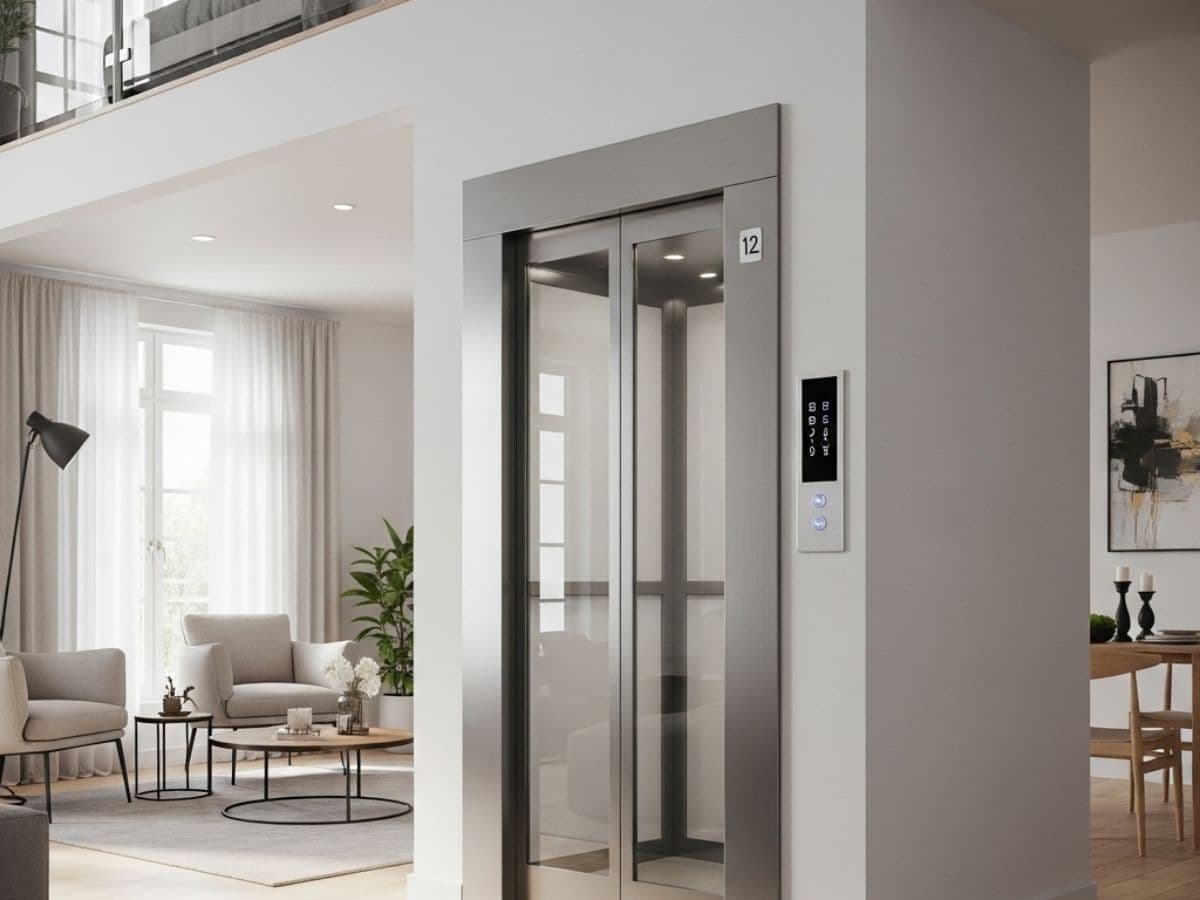
Let’s talk about something great. No, it’s not flying cars or teleportation. Let’s talk about home elevators, like the ones you see in the luxury home market or sleek hotel buildings. Now imagine having a home elevator of your own, but without tearing up your floors or digging a hole in your foundation.
While some home elevators still need a pit (a dug-out space below your lowest floor to allow for the elevator's mechanical parts), we are seeing a new type of lifts that do not have a pit. These pitless or no-pit elevators are great for small homes and smart retrofits.
So whether you're in a compact duplex or a modern two-storey townhouse, we are going to do a deep dive into home elevators with and without pits and help you find the right one for your home.
Let’s start with the basics.
Traditional residential elevators need a pit—typically 1 to 4 feet deep, dug below the lowest floor. This space houses components like buffers, cab guide rails, or part of the hydraulic mechanism.
That might be fine for new constructions—but for existing homes? It’s a challenge.
So while pit elevators still work well for large homes or new builds with flexible design plans, many homeowners are seeking alternatives that don’t require excavation.
As implied by the name, no-pit home elevators can be constructed without the need for excavation. These elevators will not require the need for deep excavation or costly foundation work and were designed to minimize structural changes needed to accommodate the elevator. Most no-pit home elevators utilize modern drive systems, without the bulky undercarriages and using sufficient power and operating robustly at floor level.
most no-pit elevators employing new technologies like:
1. Vacuum (or Pneumatic) Technology - using air pressure vs cables, pulleys, and counterweights to move the cabin.
2. Screw Drive Systems - use a rotating screw shaft to move upward and downward through the cab.
3. Gearless Traction Motors - small motors mounted above or to the side of the cab, do not require a pit or machine room.
Most no-pit elevators may simply yet efficiently sit on an existing floor of the home, making them perfect for retrofitting and for smaller residential applications.
Here’s a quick comparison to help you decide:
In short, if your home allows for pit construction, traditional elevators offer more design options and capacity. But if you need a hassle-free, compact, and modern alternative, pitless elevators win hands down.
The benefits of pitless elevators, when you live in a smaller space, are hard to beat:
Many pitless models can be installed in a space as small as 1010 mm in diameter—the size of an office chair!
No excavation = no waiting. Some models can install in as quickly as 2-3 days.
Already in your permanent home? Not a problem, pitless elevators were created specifically for existing homes without the need for structural change.
Pitless elevators meet all major safety codes and can be beautifully customized to match your décor—from transparent glass cabins to slick steel finishes.
Forget the sterile, boxy look of commercial lifts. Today’s home elevators—both pit and pitless—are architectural features.
Whether you want your lift to blend in or stand out, both types of elevators can be tailored to suit your home's style.
Pitless elevators may be small, but they are big on performance features:
Self-Supporting Structure: No external shaft needed
Low Power Use: Some models plug into standard 230V wall sockets
Quiet Operation: Some models provide advanced noise control for smooth rides
Additional Emergency Systems: Backup power supply, auto descend and emergency alarm systems
Low Maintenance: The fewer moving parts means less maintenance
Thinking about whether or not you need a pit? Here are some common scenarios:
Pit elevators work well when:
Pitless elevators work well for:
No need for civil excavation or pit building
Quicker installation = less labor cost
Complete structure = fewer exterior components
Average Cost Range within India:
Pitless Elevator: ₹12-15 lakhs for standard
Pitless Premium Elevator: ₹20-25 lakhs (depending on features)
Pit Elevator: Normally higher due to civil construction required, can go over ₹25-30 Lakhs
Pitless elevators can be a savings option for you long term - not only upfront, but in time, stress and maintenance.
Regardless of the type you choose, you should consider the following:
In the end, whether your elevator features a pit or not, what matters is that it meets your lifestyle, your space, and your future vision.
Pitless elevators are best for smaller houses, fast retrofits and sleek upgrades.Pit-based elevators are great for new builds that consider a full range of customization.
So ask yourself: do you want to go underground-or go up, the smart way?
Either way, you are not just installing a lift-you are elevating the way you live.